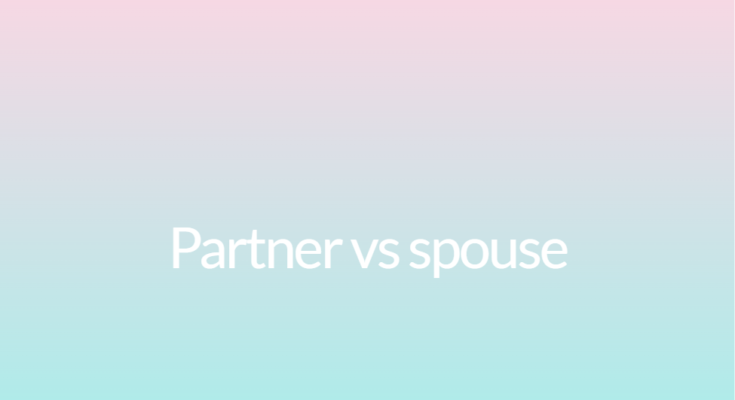Introduction:
When it comes to relationships, people often use terms like “partner” and “spouse” interchangeably. However, there are subtle differences between the two terms that can impact the legal, emotional, and societal aspects of a relationship. In this article, we will explore the differences between a partner and a spouse, highlighting their distinctions and implications.
Difference between partner and spouse:
1. Legal Status: One of the main differences between a partner and a spouse lies in their legal status. A spouse is a legally recognized partner in a marriage, whereas a partner can refer to both married and unmarried individuals in a committed relationship. Being a spouse grants certain legal rights and benefits, such as inheritance rights, tax benefits, and the ability to make medical and financial decisions on behalf of their partner.
2. Marriage: Marriage is a formal, legally binding union between two individuals, typically recognized by the state. A spouse is a person who is legally married to another person. On the other hand, “partner” is a broader term that encompasses both married and unmarried individuals who are in a committed relationship. While marriage involves a ceremony, legal documentation, and often religious or cultural rituals, partnership does not necessarily require such formalities.
3. Gender Neutrality: The term “partner” is often used in the context of same-sex relationships to emphasize gender neutrality and inclusivity. In many countries, same-sex marriage has been legalized, allowing same-sex couples to be legally recognized as spouses. However, in some places where same-sex marriage is not legally recognized, the term “partner” is commonly used to describe the committed relationship between individuals of the same gender.
4. Social and Cultural Factors: Depending on the social and cultural context, the terms “partner” and “spouse” can carry different connotations. Historically, the term “spouse” has been associated with the traditional model of marriage between a man and a woman. However, as societal norms evolve, the term “partner” has gained popularity, particularly in more progressive and inclusive circles, to describe relationships that do not conform to traditional gender roles or heterosexual norms.
Conclusion:
In summary, the difference between a partner and a spouse lies in their legal status, the formality of the relationship, and the societal connotations associated with the terms. While a spouse is a legally recognized partner in a marriage, a partner can refer to both married and unmarried individuals in a committed relationship. The term “partner” is also often used in the context of same-sex relationships to emphasize inclusivity. It is important to note that the meanings of these terms can vary depending on cultural, legal, and personal perspectives. Ultimately, whether one chooses to use the term “partner” or “spouse,” what truly matters is the love, commitment, and mutual understanding within the relationship.
HTML Table:
| Difference | Partner | Spouse |
|---|---|---|
| Legal Status | Can refer to both married and unmarried individuals in a committed relationship. | A legally recognized partner in a marriage. |
| Marriage | A broader term that encompasses both married and unmarried individuals. | A formal, legally binding union between two individuals. |
| Gender Neutrality | Used in the context of same-sex relationships to emphasize inclusivity. | Can be applicable to both opposite-sex and same-sex marriages. |
| Social and Cultural Factors | Associated with progressive and inclusive circles. | Historically associated with traditional marriage norms. |
Please note that the HTML table provided above may not be properly formatted depending on the platform you are viewing it on. Kindly adjust the code for proper table formatting if needed.



